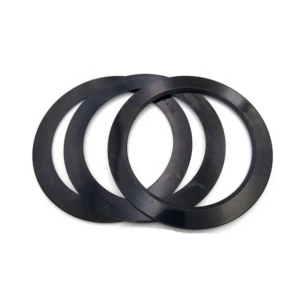Do you know the importance of rubber seals? You know in our life there are actually a lot of products made of rubber seals. rubber seals are so important that we chose this topic today. See our blog friends, you can also put forward their own ideas, let us make progress together.Okay,lets start our stament.
Rubber seals, essential components in hydraulic and pneumatic systems, come in various types tailored to distinct applications.
- NBR (Nitrile Rubber) seals, cost-effective and widely used, exhibit compatibility with petroleum-based substances. Their temperature range spans -40~120 °C.
- HNBR (Hydrogenated Nitrile Rubber) seals boast excellent corrosion resistance, tear resilience, and are suitable for applications such as automotive and refrigeration systems. They operate efficiently within a temperature range of -40~150 °C.
- SIL (Silicone Rubber) seals excel in heat and cold resistance but are not recommended for concentrated solvents or oils. They find application in household appliances and environments with a temperature range of -55~250 °C.
- VITON (Fluorine Rubber) seals, with high-temperature resistance and chemical resilience, serve well in diesel engines and chemical plants. They function within a temperature range of -20~250 °C.
- FLS (Fluorine Silicon Rubber) seals combine the strengths of both fluorine and silicone rubber, making them suitable for demanding aviation, aerospace, and military applications. They operate within a temperature range of -50~200 °C.

- EPDM (Ethylene Propylene Diene Monomer) seals offer good weather and chemical resistance, making them ideal for applications in high-temperature water vapor environments. They are effective within a temperature range of -55~150 °C.
- CR (Neoprene) seals, resistant to sunlight and weather, find utility in various atmospheric exposure environments. Their temperature range spans -55~120 °C.
- IIR (Butyl Rubber) seals excel in airtightness and resistance to polar solvents, suitable for chemical-resistant or vacuum equipment. Their operating temperature range is -50~110 °C.
- ACM (Acrylic Rubber) seals exhibit excellent oil resistance and high-temperature capabilities, making them suitable for automotive transmission systems. They function within a temperature range of -25~170 °C.
- NR (Natural Rubber) seals, known for their good abrasion resistance, find application in automotive brake fluid and ethanol environments. Their temperature range spans -20~100 °C.
- PU (Polyurethane) seals, distinguished by superior mechanical properties, excel in wear resistance and high-pressure sealing. They operate within a temperature range of -45~90 °C.
- Metal Rubber Seals, constructed from stainless steel wire, offer robust performance in extreme environments with a temperature range of -80~800 °C. Coated with materials like PTFE, they provide enhanced sealing strength. Each seal type serves specific purposes, catering to diverse industrial requirements based on factors such as temperature, media, and environmental conditions.
The time of learning knowledge always goes by very quickly. Today we learned something new and know that rubber seals are very important to our society today. Friends, do you want to know more? If you want, you can contact me at any time, and we can discuss with each other. The so-called “sea memory bosom friend, faraway land is near” looks forward to discussing with you. See you next time!